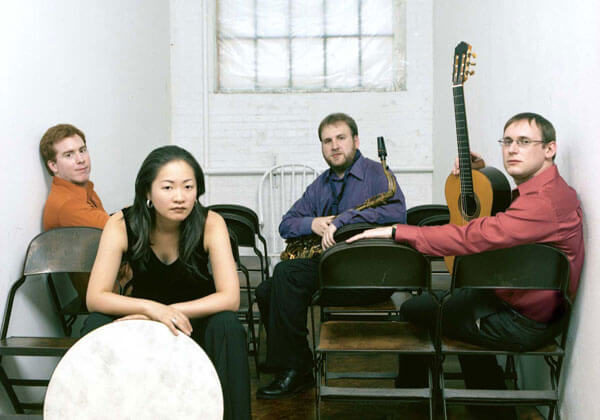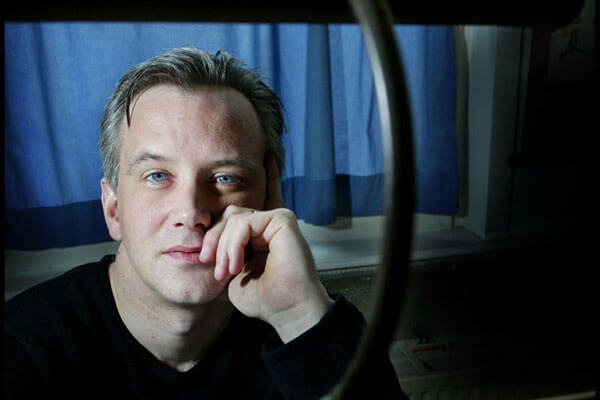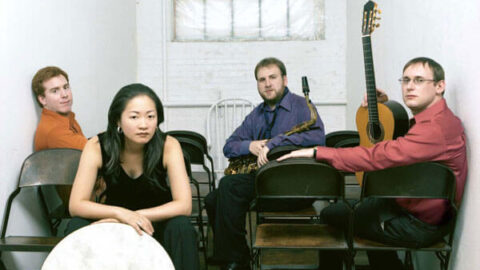 Writing in 2009, Peter Adriaansz once compared his ideal conception of music to that of a tree. “Akin to [the] somewhat simplistic idea of a tree simply being,” he wrote, “music … needed also to simply be and to occupy itself more with acts of revealing than of creating.” Fittingly, on Tuesday, November 20, 2012, at Roulette in Brooklyn, Flexible Music’s performance of two works by Adriaansz (as well as one each by Seung-Ah Oh and Mikel Kuehn) concerned itself with layers of pitch and rhythm, which were slowly pulled back or draped upon each other.
Writing in 2009, Peter Adriaansz once compared his ideal conception of music to that of a tree. “Akin to [the] somewhat simplistic idea of a tree simply being,” he wrote, “music … needed also to simply be and to occupy itself more with acts of revealing than of creating.” Fittingly, on Tuesday, November 20, 2012, at Roulette in Brooklyn, Flexible Music’s performance of two works by Adriaansz (as well as one each by Seung-Ah Oh and Mikel Kuehn) concerned itself with layers of pitch and rhythm, which were slowly pulled back or draped upon each other.

The theme of the evening, presented by Ear Heart Music, was stasis and motion in music. While Flexible Music’s half of the program was supposed to represent stasis, it felt more like a study of gradual, deliberate motion. In Adriaansz’s Fraction (2011), each of the four performers, beginning at different tempi, slowly retuned their instruments in order to diverge and eventually converge in pitch, rhythm, and tempo, setting forth a series of changing relationships that rolled through one’s ears as tunings oscillated. The consideration of motion was a mathematical, theoretical one that nevertheless resulted in a feeling of driving force with small, almost dizzying moments of dissonance.

Adriaansz’s Phrase (2011) also played with perception of tempo and rhythm, set against a slowly ascending and descending sine chord, which periodically destabilized the deceivingly steady motion of the instrumentation. The members of Flexible Music—Timothy Ruedeman on saxophone, Daniel Lippel on guitar, Cory Smythe on piano, and Haruka Fujii on percussion—executed each piece with a high degree of precision and skill. While the exact mathematical architecture of each piece was not fully articulated, one had a sense of the intricacy at play. Though at times the saxophone’s volume seemed to overpower the rest of the ensemble, Roulette was generally a complementary setting for these works, which were, in all other respects, conveyed with great clarity.
Oh’s piece, Fragments (2009), also presented an eloquent consideration of the night’s motif, in which communication between the performers of Flexible Music figured palpably. As small gestures and motifs were repeated and expanded, moments of sea changes emerged. In the midst of similar textures, a dissonant one would be introduced, with the guitar often acting as the instrument of change. Navigating these variations, the players looked at one another intently. Often, only one or two would play at once, either passing the torch to the others or eventually coming together as a whole, as in a jazz ensemble. A general feeling of tension and the release thereof culminated in a final, dramatic guitar tone, colored by the pedal, as each performer stared toward the apparent source of the receding sound.
Adriaansz’s and Oh’s pieces were by far the highlight of the evening, though Kuehn’s exploratory use of shifting canons in Color Fields was not to be discounted. The second half of the program, while skillfully performed by the Cadillac Moon Ensemble, lacked the energy and potency of the first half. True to Adriaansz’s intention, Flexible Music’s performance was, much like a tree, static in its roots but capable of minute, accumulative expansion and growth, something to be contemplated both incrementally and holistically.
–
Sasha Jones is a musically-minded writer and editor based in Brooklyn, NY.
























